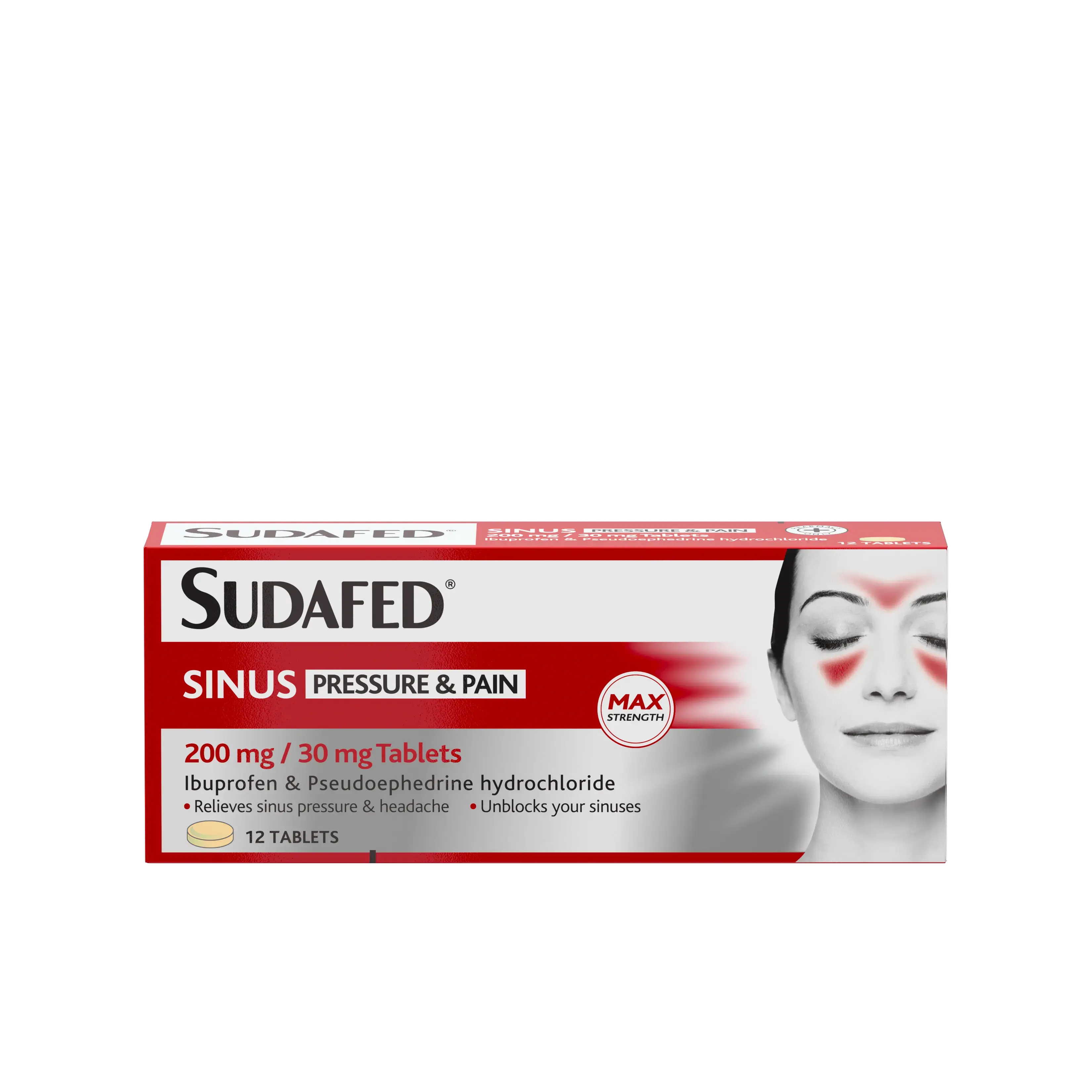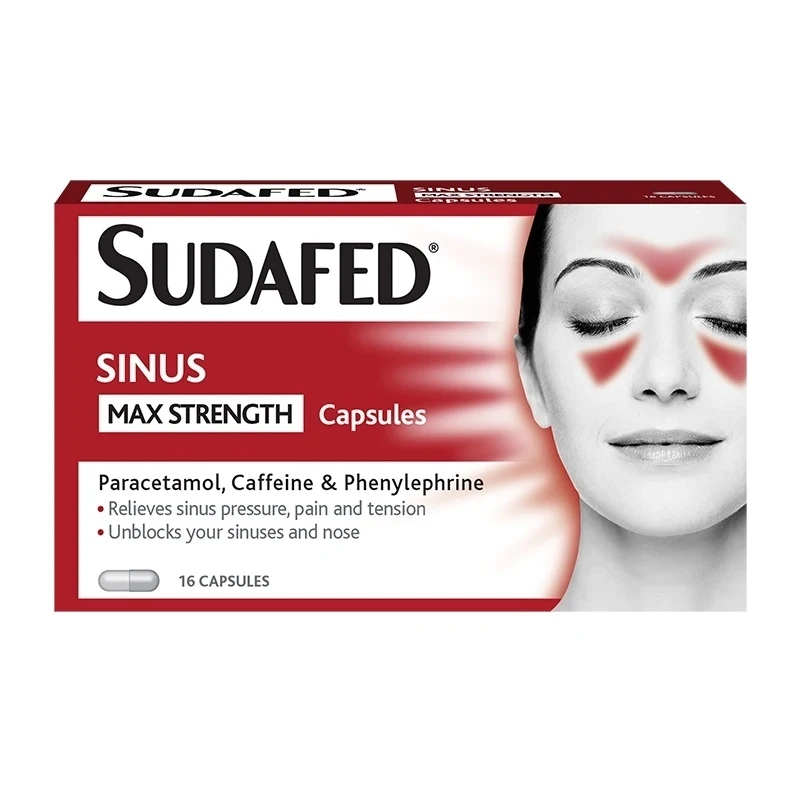Headache pain can be uncomfortable and affect your day, can last between 30 minutes and a few hours1. In most cases, headaches go away on their own and aren’t a sign of anything more serious – but you may want to get some relief from the symptoms2.
There can be different causes of a headache. Identifying the location and type of headache you’re suffering from can help you work out what might be the best way to help relieve your symptoms3.
If your headache is caused by sinus or head congestion, there are various treatments you can try to help soothe your symptoms4.
Learn more about the different things you can do to help get rid of a headache, along with the potential causes and symptoms.
Causes of a Sinus Headache
Our bodies have four pairs of sinuses in the skull and face bones that form part of the nose and respiratory system5. Air flows through these empty cavities when you breathe. They also produce mucus to moisten them, which helps remove unwanted bacteria6.
When the linings of these sinuses become inflamed and swell – often because of an irritant or infection – it can cause congestion. This is because more mucus is being produced but it can’t drain properly7
This can be one of the main causes of a sinus headache as it creates a build-up of pressure in your sinuses – often behind the cheeks, eyes and forehead8. You might experience a headache on either side of your head or anywhere in a sinus area9.
Congestion can be one of the main sinus headache causes. In turn, this congestion may be caused by10:
Symptoms of a Sinus Headache
The most common symptoms of a sinus headache include1112:
Deep and ongoing pain in your cheekbones, forehead, or the bridge of your nose
Headache pain and pressure that gets worse when you lean forward, lie down, strain or move your head suddenly
Nasal discharge that’s green or yellow.
You might also experience some other sinus issues, which could indicate that it’s a sinus headache. These can include1314:
Feeling fatigued
Aching in your top jaw
Runny or stuffy nose
Fever
Redness and swelling of your cheeks, nose or forehead.
There can be some overlap between the symptoms of a sinus headache and those of a migraine or tension headache15. As the best treatment for a headache differs depending on the type, it’s important to work out whether sinuses are the cause or if it’s something else.
When sinusitis or another type of infection is the cause of your headache, you’re more likely to experience a fever as one of the symptoms16. With a tension headache, this is less likely.

However, if you experience any of the below with your headache, then it could be a sign that it’s a migraine and not a sinus headache17:
Nausea
Dizziness
Increased sensitivity to light.
Treatment for a Sinus Headache
The cause of your sinus headache can help you work out what might be the most appropriate treatment. The aim is usually to treat the underlying infection that’s responsible for your inflamed sinuses18.
If your headache is caused by sinusitis, a few ways to try and treat it could include19:
Drinking lots of fluids
Having plenty of rest
Taking over-the-counter medication.
Where an allergic reaction is the cause, treatment for a sinus headache may include taking preventative allergy medication prescribed by a doctor and avoiding any triggers20.
To soothe your symptoms, some decongestants can work to provide pain relief and ease congestion at the same, helping to treat a sinus headache:

SUDAFED® Sinus Pressure & Pain Tablets
– The active ingredient phenylephrine helps relieve congestion and reduce swelling, while ibuprofen offers pain and headache relief.

SUDAFED® Sinus Max Strength Capsules
– These contain phenylephrine to ease congestion and swelling, paracetamol to soothe headaches and pain and caffeine to combat tiredness.

A few home remedies could also help, such as21:
Running a humidifier to moisten the air at home and encourage decongestion
Breathing in steam or applying a warm flannel to sinus areas to promote drainage and relieve pressure
Using a saline solution or saltwater nasal spray to cleanse the area.
Learn more about home remedies here.7
Causes of Head Congestion
Head congestion can also cause a headache. The feeling of fullness and pressure can lead to pain and discomfort22. Congestion is a common symptom of having a head cold or flu , which are two of the main causes of a headache23.
When you catch a head cold your body is infected by a virus that attacks the lining of your nose or throat24. While your body creates more white blood cells to fight it off, the virus can cause nasal swelling and extra mucus production, resulting in inflamed sinuses, mucus build-up and congestion25.
This head congestion can create pressure behind your eyes and face, causing a headache and pain in your forehead26.
It’s similar when you catch flu, although in this case a different type of virus – the influenza virus – is responsible for nasal swelling, congestion and causing a headache27.
Other possible causes of head congestion can include28:
Sinus infection – Sinusitis and sinus infections usually cause a sinus headache, but some may result in head congestion.
Air pollution – Irritants in polluted air can affect sensitive nasal passages, causing their linings to become inflamed and resulting in congestion and headaches.
Symptoms of Headaches Caused by Head Congestion

The main symptoms of a headache brought on by head congestion are similar to those of a sinus headache and other types of headache. You may experience a sharp or dull pain that comes on suddenly or gradually and affects one or both sides of your head29.
Other associated symptoms of a headache caused by head congestion can include30:
Runny or stuffy nose
Tingling, scratchy or sore throat
Tiredness and fatigue
Body aches
Coughing.
The fact head congestion and sinus headaches have similar symptoms can make it tricky to pinpoint the exact cause of your headache. However, the main difference is how long your symptoms may last31.
Symptoms of sinus congestion can last up to four weeks, whereas head congestion and its symptoms such as a headache caused by a cold should clear up within seven to 10 days32.
If you experience any of the following symptoms you should speak to your doctor as it could be a sign of a migraine or cluster headache33:
Throbbing pain at the front or side of your head
Feeling or being sick and finding light or noise painful
The headache keeps returning
Painkillers have no effect.
Treatment for Headaches Caused by Head Congestion
There are a few things you can try to stop a headache from getting worse when you’re congested, such as34:
Drinking plenty of water
Relaxing and getting lots of rest
Avoiding alcohol
Taking painkillers
Staying away from screens and straining your eyes.
However, to treat a headache caused by head congestion, it might help to soothe the source. Decongestants work to reduce inflamed sinuses and the pressure build-up behind head congestion headaches35.
Along with an active decongestant ingredient to make breathing easier and help clear nasal passages, many SUDAFED® products contain other ingredients that can help ease pain and other symptoms associated with your headache36.
Learn more about how decongestants work to help ease congestion and associated headaches.